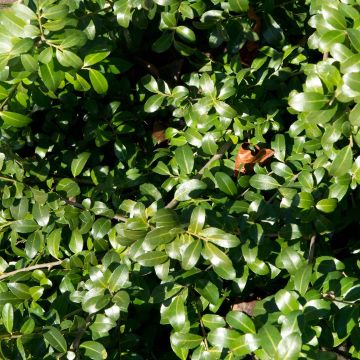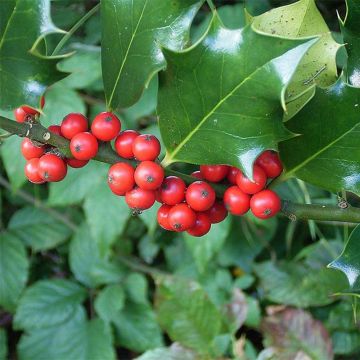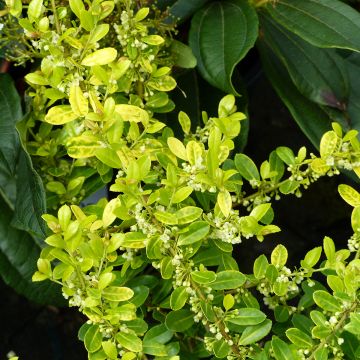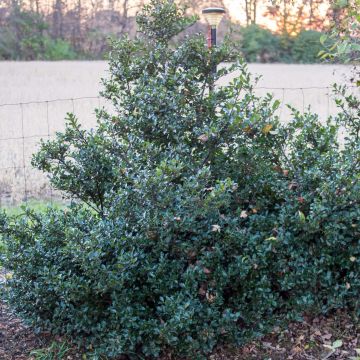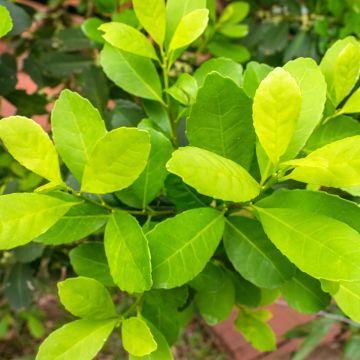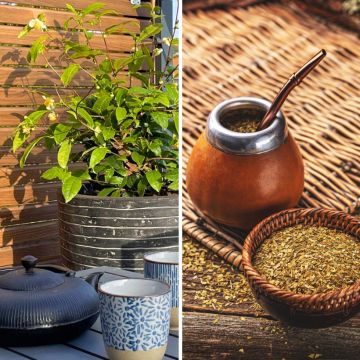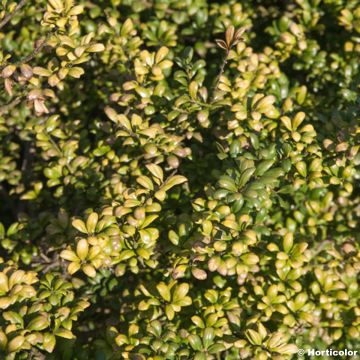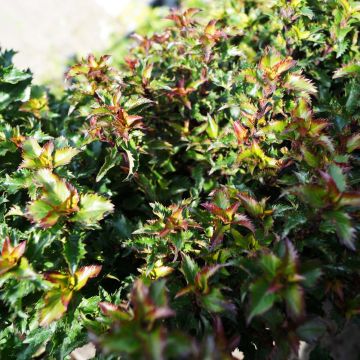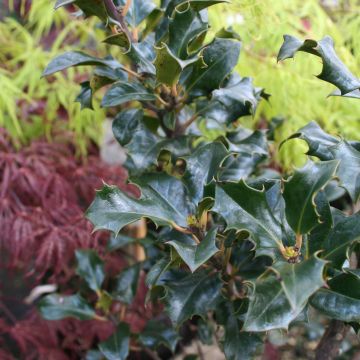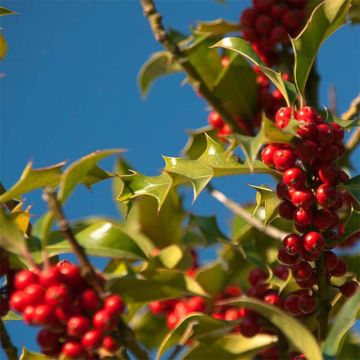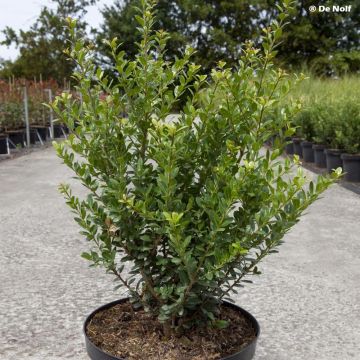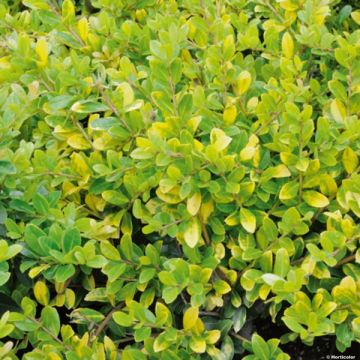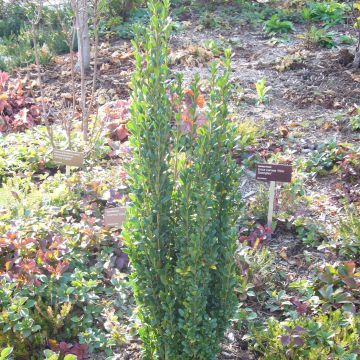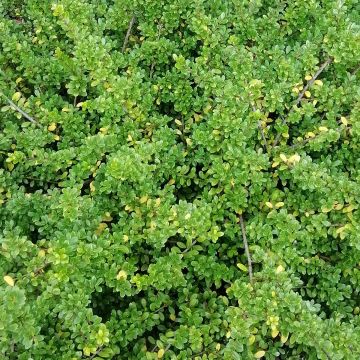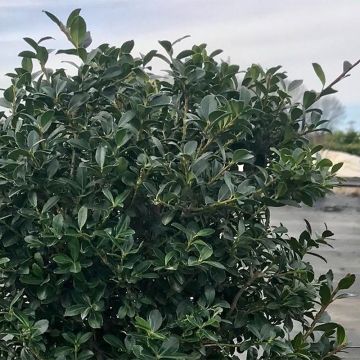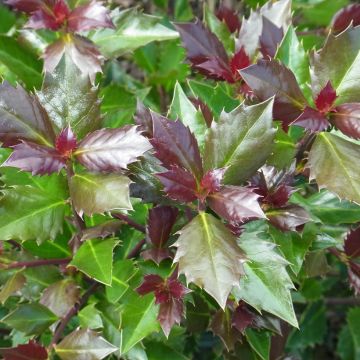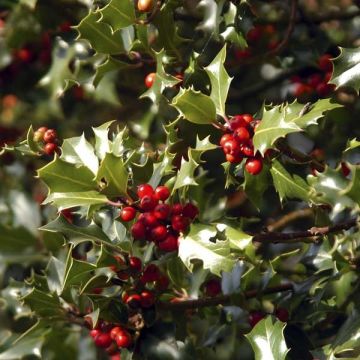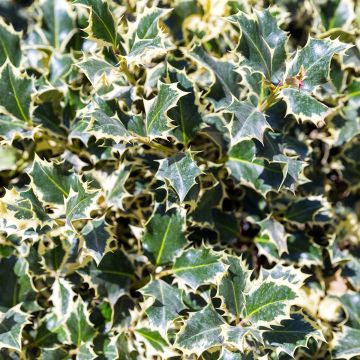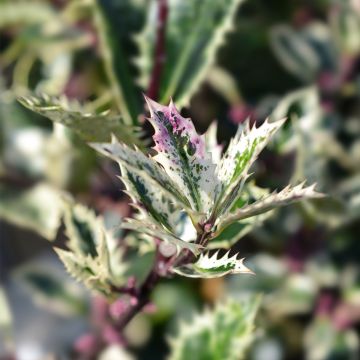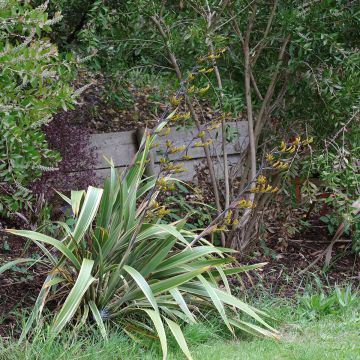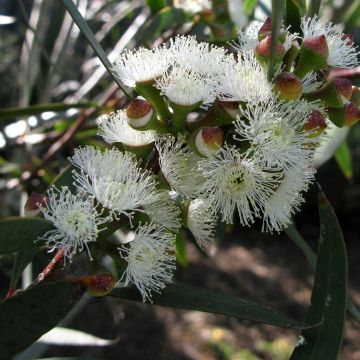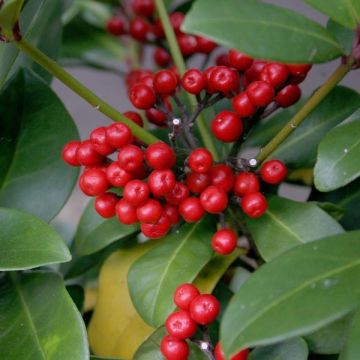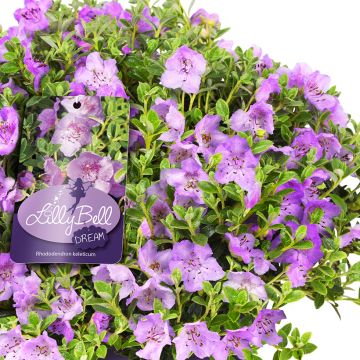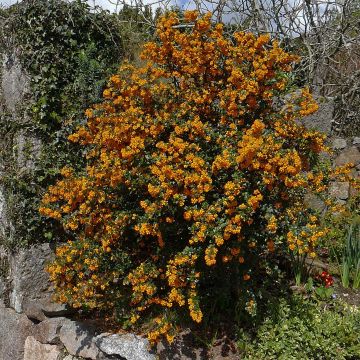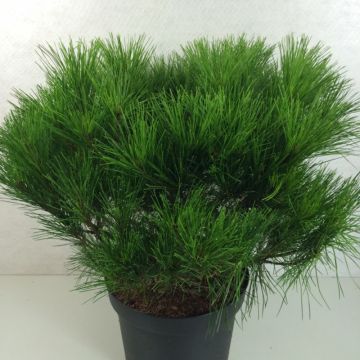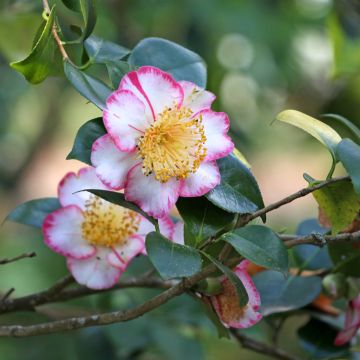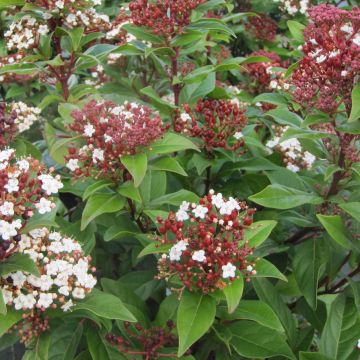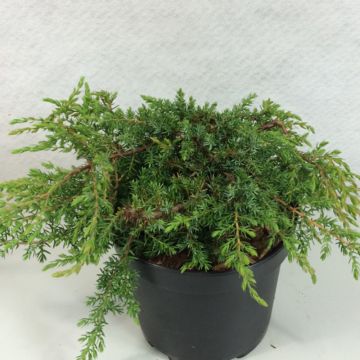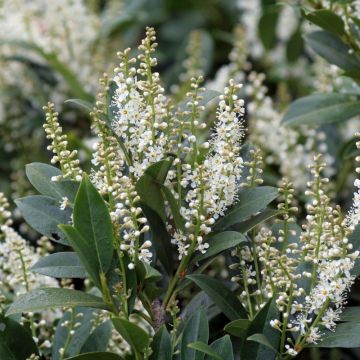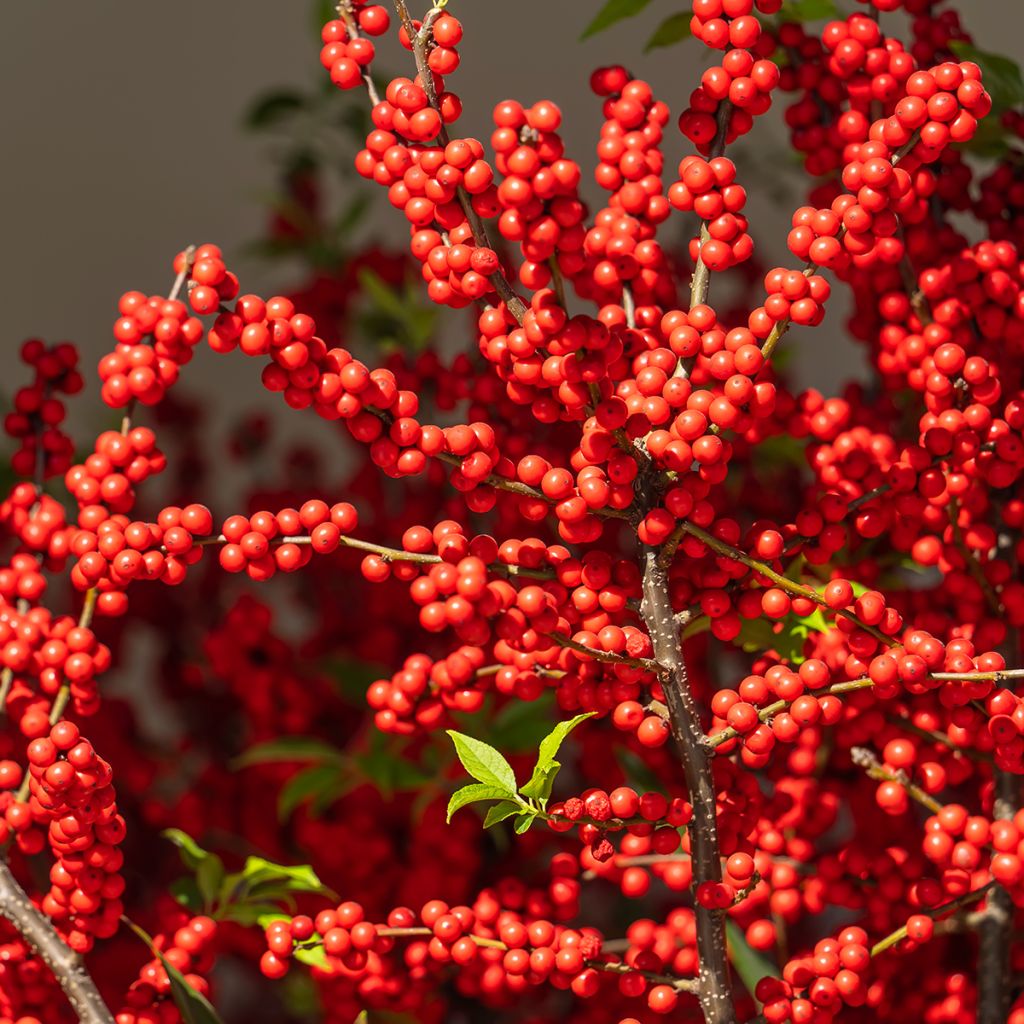

Ilex verticillata Magical Berry
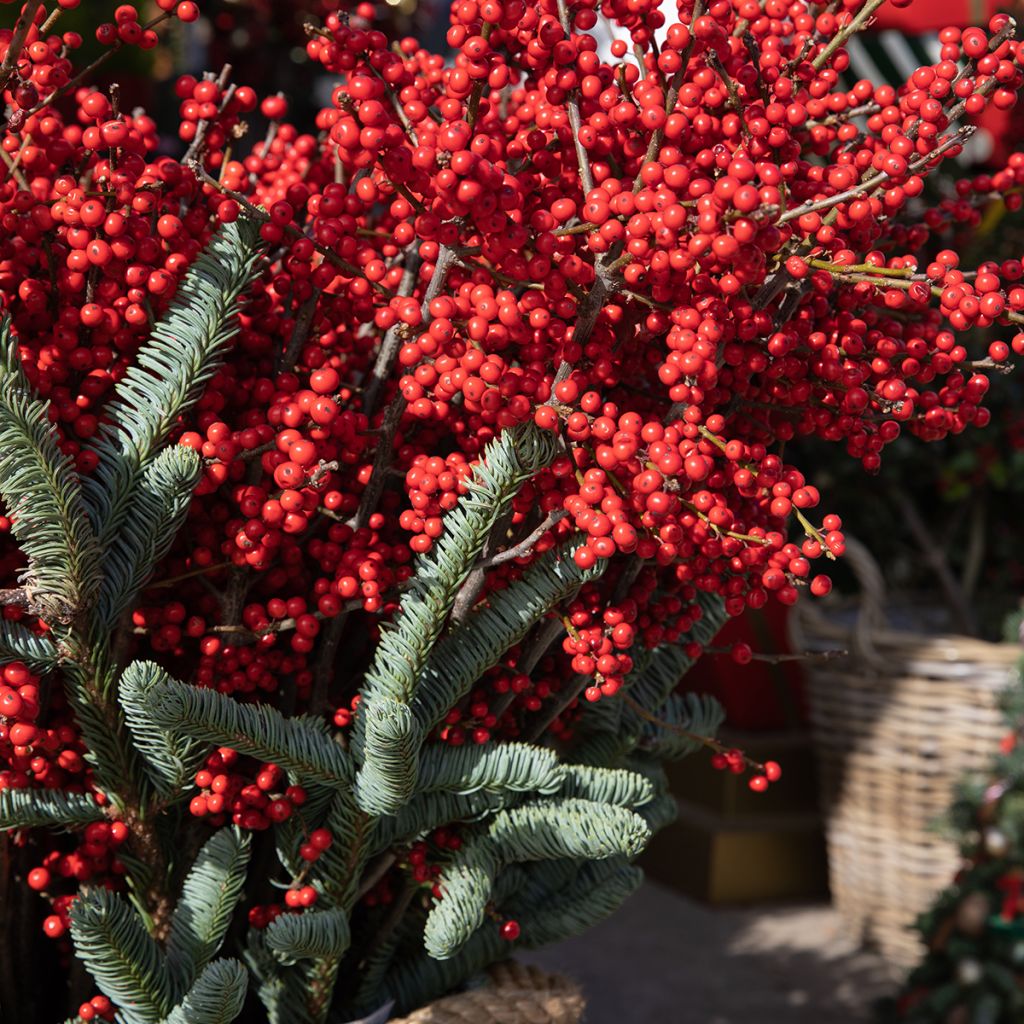

Ilex verticillata Magical Berry
Ilex verticillata Magical Berry
Ilex verticillata Magical® Berry Winterberry ('Kolmber')
Why not try an alternative variety in stock?
View all →This plant carries a 24 months recovery warranty
More information
We guarantee the quality of our plants for a full growing cycle, and will replace at our expense any plant that fails to recover under normal climatic and planting conditions.
From €5.90 for pickup delivery and €6.90 for home delivery
Express home delivery from €8.90.
Does this plant fit my garden?
Set up your Plantfit profile →
Description
Ilex verticillata Magical Berry is a female variety of winterberry selected for its compactness and abundant bright red fruiting, which is extremely decorative until late winter on its bare branches. Native to Canada and the northeastern USA, this hardy species has deciduous foliage and is not at all prickly like European holly. This small shrub grows in non-calcareous, moist to wet soil, preferably in full sun, and will find its place in even the smallest gardens. This female variety will need to be pollinated by a male plant ('Southern Gentleman') in order to bear fruit.
Hollies belong to the Aquifoliaceae family and come in more than five hundred species, trees and shrubs, scattered across the planet, from tropical zones to temperate climates. Ilex verticillata is a suckering, ubiquitous shrub which likes acidic soils and moist to wet areas, but also adapts to open spaces like meadows or occasionally drier sandy soils. It is found in a large part of the North American territory. It is quite polymorphous, taking on the appearance of a large spreading shrub 5m tall and 6m wide, or a narrow shrub not exceeding 2m in height, depending on its habitat. This species is dioecious, meaning there are male and female individuals.
Magical Berry Winterberry Kolmber is a selection by Dutch breeder Peter R. Kolster, who is responsible for nearly thirty shrub varieties mainly among the genera Baccharis and Hydrangea, but also Philadelphus, Exochorda, Callicarpa, and others. Initially selected in 1997 by cross-breeding two Ilex verticillata plants, this holly was protected by a US patent in 2003 for commercial distribution. It forms a compact shrub, about 1.50m tall and 80cm wide, with an upright growth habit. The foliage, deciduous in winter, is composed of obovate or lanceolate leaves, tapering at the tips, measuring approximately 6cm long and 2.5cm wide, with finely toothed edges. The leaf blades are medium to dark green, with a non-hairy upper surface that is somewhat rough and slightly glossy. Flowering occurs in late spring, sometimes later, in the form of small white or greenish flowers no larger than 5mm in diameter. Solitary or grouped in twos or threes, they are scentless and have no ornamental value. When pollinated by a nearby male, the fertilised female flowers transform into small round and shiny, orange-red berries, clustered along the branches. Measuring 8mm in diameter, these berries appear approximately 75 days after pollination and persist on the plant throughout the winter, providing a feast for birds. Hardy to -25°C, this holly thrives in cool to wet, non-calcareous soils.
Ilex verticillata 'Magical Berry' is one of the most beautiful ornamental fruit shrubs in the garden. Its branches also make beautiful decorations for indoor compositions. Its compact size means it will fit even in the most intimate gardens, integrated into a loose hedge or within a mixed border. Its natural appearance pairs well with other shrubs of the same type to form a rustic hedge. Combine it with the charming Rosa rubrifolia (or Rosa glauca), a botanical rose with bluish foliage that produces pretty, single, pink flowers with golden centres in summer, followed by small shiny red decorative fruits. Slightly taller Amelanchier alnifolia Smoky is also a shrub with a very natural silhouette, with ornamental and even edible qualities. Its spring white flowers are remarkable and are followed by small edible blue-black fruits. As for the foliage, the young shoots turn red and especially in autumn, the plant turns yellow and orange. To keep some greenery in winter, add a Japanese privet (Ligustrum japonicum) with beautiful shiny dark green foliage and white summer flowers.
Report an error about the product description
Plant habit
Flowering
Foliage
Botanical data
Ilex
verticillata
Magical® Berry Winterberry ('Kolmber')
Aquifoliaceae
Cultivar or hybrid
Other Ilex - Holly
Planting and care
To plant Ilex verticillata Magical Berry, add some compost to the soil and incorporate it into your garden soil to slightly acidify and enrich it. If your soil contains active limestone, this holly may develop chlorosis (yellowing of the foliage around the leaf veins). In that case, add ericaceous soil and peat substitute during planting and mulch with pine bark, which tends to acidify the soil over the years. Choose a partially shaded location in a warm climate. Follow watering instructions for the first three years (preferably with non-limestone water), especially during prolonged droughts, to help the bush establish itself. In the first few years, prune in the spring by selecting the branches you want to keep. Step back and observe your holly as a whole to determine the shape and arrangement of the stems. Ilex can be attacked by holly leaf miners and white scale insects in the spring, and mites and aphids in the summer. Consider applying a preventive treatment at the beginning of the season.
Planting period
Intended location
Care
This item has not been reviewed yet - be the first to leave a review about it.
Evergreen shrubs
Haven't found what you were looking for?
Hardiness is the lowest winter temperature a plant can endure without suffering serious damage or even dying. However, hardiness is affected by location (a sheltered area, such as a patio), protection (winter cover) and soil type (hardiness is improved by well-drained soil).

Photo Sharing Terms & Conditions
In order to encourage gardeners to interact and share their experiences, Promesse de fleurs offers various media enabling content to be uploaded onto its Site - in particular via the ‘Photo sharing’ module.
The User agrees to refrain from:
- Posting any content that is illegal, prejudicial, insulting, racist, inciteful to hatred, revisionist, contrary to public decency, that infringes on privacy or on the privacy rights of third parties, in particular the publicity rights of persons and goods, intellectual property rights, or the right to privacy.
- Submitting content on behalf of a third party;
- Impersonate the identity of a third party and/or publish any personal information about a third party;
In general, the User undertakes to refrain from any unethical behaviour.
All Content (in particular text, comments, files, images, photos, videos, creative works, etc.), which may be subject to property or intellectual property rights, image or other private rights, shall remain the property of the User, subject to the limited rights granted by the terms of the licence granted by Promesse de fleurs as stated below. Users are at liberty to publish or not to publish such Content on the Site, notably via the ‘Photo Sharing’ facility, and accept that this Content shall be made public and freely accessible, notably on the Internet.
Users further acknowledge, undertake to have ,and guarantee that they hold all necessary rights and permissions to publish such material on the Site, in particular with regard to the legislation in force pertaining to any privacy, property, intellectual property, image, or contractual rights, or rights of any other nature. By publishing such Content on the Site, Users acknowledge accepting full liability as publishers of the Content within the meaning of the law, and grant Promesse de fleurs, free of charge, an inclusive, worldwide licence for the said Content for the entire duration of its publication, including all reproduction, representation, up/downloading, displaying, performing, transmission, and storage rights.
Users also grant permission for their name to be linked to the Content and accept that this link may not always be made available.
By engaging in posting material, Users consent to their Content becoming automatically accessible on the Internet, in particular on other sites and/or blogs and/or web pages of the Promesse de fleurs site, including in particular social pages and the Promesse de fleurs catalogue.
Users may secure the removal of entrusted content free of charge by issuing a simple request via our contact form.
The flowering period indicated on our website applies to countries and regions located in USDA zone 8 (France, the United Kingdom, Ireland, the Netherlands, etc.)
It will vary according to where you live:
- In zones 9 to 10 (Italy, Spain, Greece, etc.), flowering will occur about 2 to 4 weeks earlier.
- In zones 6 to 7 (Germany, Poland, Slovenia, and lower mountainous regions), flowering will be delayed by 2 to 3 weeks.
- In zone 5 (Central Europe, Scandinavia), blooming will be delayed by 3 to 5 weeks.
In temperate climates, pruning of spring-flowering shrubs (forsythia, spireas, etc.) should be done just after flowering.
Pruning of summer-flowering shrubs (Indian Lilac, Perovskia, etc.) can be done in winter or spring.
In cold regions as well as with frost-sensitive plants, avoid pruning too early when severe frosts may still occur.
The planting period indicated on our website applies to countries and regions located in USDA zone 8 (France, United Kingdom, Ireland, Netherlands).
It will vary according to where you live:
- In Mediterranean zones (Marseille, Madrid, Milan, etc.), autumn and winter are the best planting periods.
- In continental zones (Strasbourg, Munich, Vienna, etc.), delay planting by 2 to 3 weeks in spring and bring it forward by 2 to 4 weeks in autumn.
- In mountainous regions (the Alps, Pyrenees, Carpathians, etc.), it is best to plant in late spring (May-June) or late summer (August-September).
The harvesting period indicated on our website applies to countries and regions in USDA zone 8 (France, England, Ireland, the Netherlands).
In colder areas (Scandinavia, Poland, Austria...) fruit and vegetable harvests are likely to be delayed by 3-4 weeks.
In warmer areas (Italy, Spain, Greece, etc.), harvesting will probably take place earlier, depending on weather conditions.
The sowing periods indicated on our website apply to countries and regions within USDA Zone 8 (France, UK, Ireland, Netherlands).
In colder areas (Scandinavia, Poland, Austria...), delay any outdoor sowing by 3-4 weeks, or sow under glass.
In warmer climes (Italy, Spain, Greece, etc.), bring outdoor sowing forward by a few weeks.

































